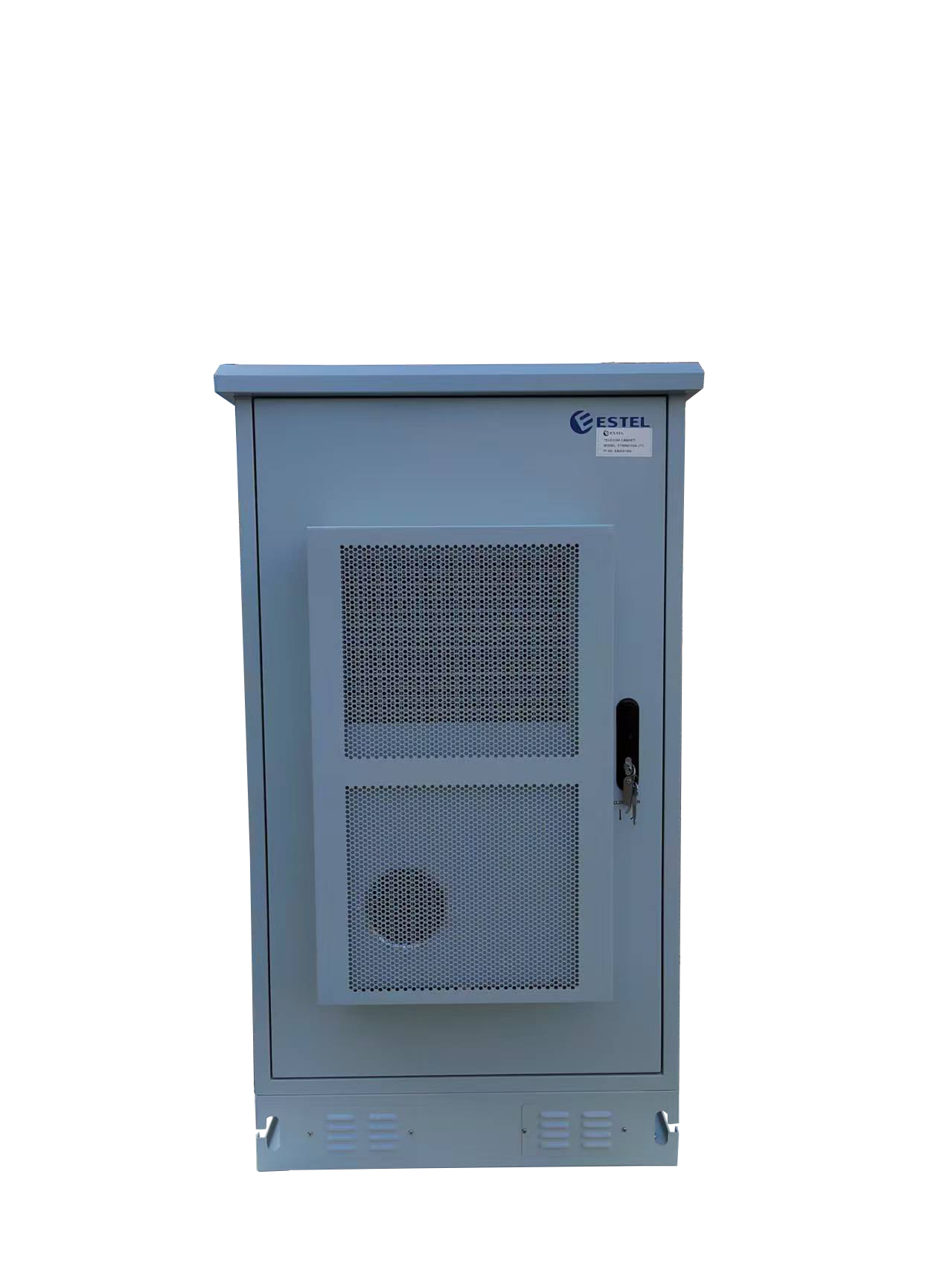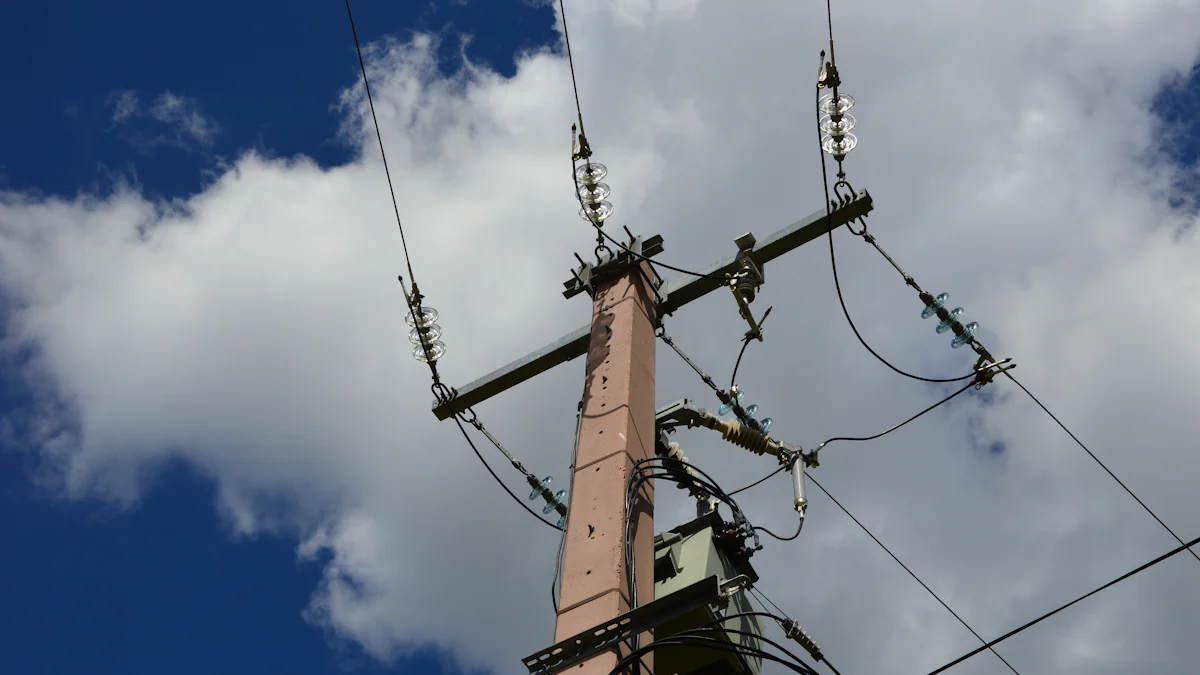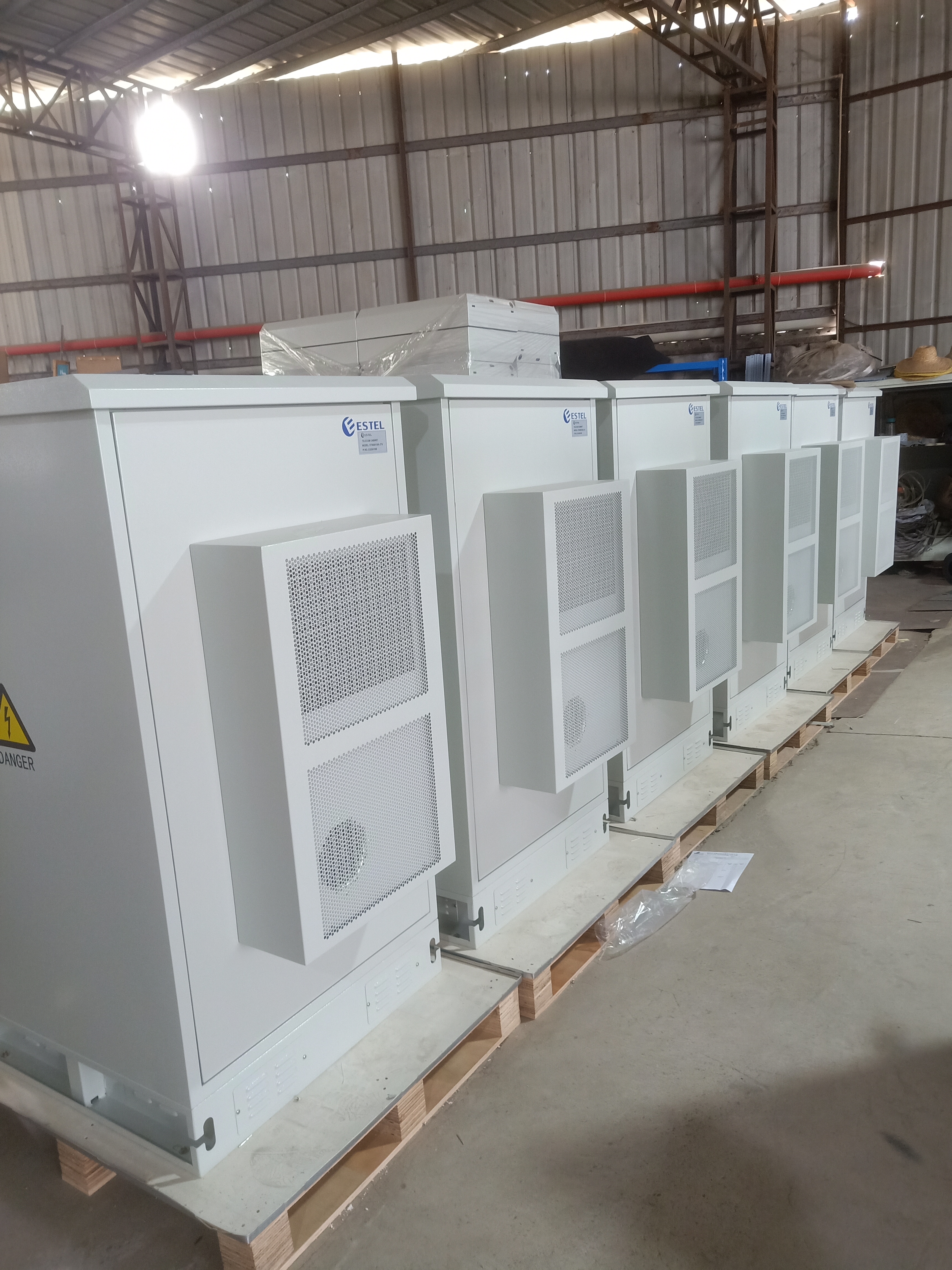Key Differences Between Communication and Regular Power Supplies

Communication power supplies play a vital role in ensuring the reliability of critical systems. These power supplies reduce noise, provide redundancy, and maintain uninterrupted power, making them indispensable for telecommunications and networking. On the other hand, regular power supplies are designed for general-purpose use. They are cost-effective and versatile but lack the advanced features required for communication systems.
Understanding the "通信电源与普通电源的区别" helps you choose the right power supply for your needs. For example, communication power supplies prioritize signal integrity and precision, while regular power supplies focus on simplicity and affordability. Misconceptions, such as assuming all power supplies are the same, can lead to poor decisions. Knowing the "通信电源与普通电源的区别" ensures you select a solution that matches your system's requirements.
The "通信电源与普通电源的区别" also extends to their applications. Communication power supplies are essential for data centers and telecom equipment, while regular power supplies are common in household appliances and consumer electronics. By understanding these differences, you can make informed choices for your projects.
Key Takeaways
Communication power supplies are reliable and accurate. They are important for systems like telecoms and data centers.
Regular power supplies are cheaper and flexible. They work well for daily use in electronics and machines.
Knowing the differences helps you pick the right power supply for your needs.
Use communication power supplies for stable and quiet systems. Use regular power supplies for simple and low-cost uses.
Definitions and Overview
What Are Communication Power Supplies?
Communication power supplies are specialized devices designed to meet the demands of communication systems. These systems require stable and precise power delivery to ensure uninterrupted operation and signal integrity.
Features of Communication Power Supplies
Communication power supplies often include advanced features that set them apart from regular options. They use technologies like the switching power supply to provide efficient energy conversion. Noise filtering is another critical feature, reducing electromagnetic interference that could disrupt sensitive communication equipment. Many models also support redundancy, ensuring continuous operation even during power failures. These power supplies often include multiple types of regulated power outputs, allowing them to meet the specific voltage and current requirements of various devices.
Another key feature is their ability to convert ac to dc power efficiently. This conversion is essential for powering communication equipment, which typically operates on direct current. Additionally, communication power supplies are designed to handle fluctuations in input power, maintaining a stable output under varying conditions.
Importance in Communication Systems
You rely on communication systems for critical tasks like data transmission, networking, and telecommunications. A communication power supply ensures these systems operate without interruptions. Its precision and reliability make it indispensable for applications like data centers, telecom towers, and signal processing systems. Without these power supplies, communication systems would face frequent disruptions, leading to data loss and reduced efficiency.
What Are Regular Power Supplies?
Regular power supplies are general-purpose devices used to power a wide range of equipment. They are simpler in design and more affordable than their communication counterparts.
Features of Regular Power Supplies
Regular power supplies come in two main types: linear power supply and switching power supply. The linear power supply provides stable output but is less efficient, while the switching power supply offers higher efficiency and compact size. These power supplies are versatile and can handle basic power delivery tasks. However, they lack advanced features like noise filtering and redundancy.
Most regular power supplies also perform ac to dc power conversion, making them suitable for devices that require direct current. They are easy to use and widely available, making them a popular choice for everyday applications.
Common Use Cases for Regular Power Supplies
You will find regular power supplies in consumer electronics like televisions, computers, and gaming consoles. They are also used in industrial and commercial equipment where precision and noise reduction are not critical. Their affordability and simplicity make them ideal for non-specialized applications.
Key Functional Differences

Design and Technology
Noise Filtering and Signal Integrity in Communication Power Supplies
Communication power supplies use advanced technologies to ensure noise filtering and maintain signal integrity. These technologies include:
Passive components that filter out noise effectively.
Proper bypassing techniques for control chips, reducing noise at power pins.
Post-regulation methods, such as low-noise regulators on the output, to enhance performance.
These features ensure that sensitive communication systems operate without interference. You can rely on these power supplies to deliver stable and clean power, which is critical for maintaining the integrity of signals in telecommunications and networking equipment.
Simplicity and Versatility in Regular Power Supplies
Regular power supplies focus on simplicity and versatility. Their straightforward design makes them easy to use and widely applicable. You will find them in devices like televisions and gaming consoles. While they lack advanced noise filtering, their versatility allows them to power a broad range of equipment. This makes them a practical choice for general-purpose applications.
Power Delivery and Regulation
Precision in Regulated Power Supply for Communication Systems
Communication power supplies excel in delivering precise power through regulated power supply methods. These include:
Constant voltage power supply, which maintains steady output voltage.
Series regulation, offering high performance with a simple design.
Switching regulation, known for its efficiency and low power dissipation.
SCR regulation, ideal for high-power applications.
Constant current power supply, ensuring steady output current.
These methods ensure that communication systems receive stable power, even under varying conditions. This precision is essential for preventing disruptions in critical systems.
Variability in Unregulated Power Supply for General Applications
Unregulated power supplies, commonly found in regular power supplies, lack voltage regulation. This leads to output voltage fluctuations based on input AC variations. The high internal resistance causes the output voltage to change with the current, which can affect device performance. Sensitive electronics may suffer damage or reduced effectiveness due to these fluctuations. Despite their limitations, unregulated power supplies remain suitable for less sensitive applications where precision is not a priority.
Durability and Environmental Considerations
Robustness in Harsh Environments for Communication Power Supplies
Communication power supplies are designed to withstand challenging environments. They can operate in extreme temperatures ranging from -40°C to 80°C. Their construction endures high levels of shock and vibration, making them suitable for demanding applications. These power supplies also resist moisture and radiation, ensuring reliable performance in harsh conditions.
General Durability of Regular Power Supplies
Regular power supplies offer general durability for everyday use. They perform well in standard environments but lack the specialized features needed for extreme conditions. Their design focuses on affordability and functionality, making them a dependable choice for typical applications.
Applications

Where Are Communication Power Supplies Used?
Telecommunications and Networking Equipment
Communication power supplies play a crucial role in telecommunications and networking. You can find them powering cell towers, ensuring reliable connectivity even in remote areas. These power supplies enhance energy efficiency by minimizing energy losses, which reduces operating costs in data centers. They also support fiber optic networks by providing precise voltage regulation and low noise levels, both essential for seamless data transmission. Satellite systems also rely on these power supplies to maintain stable power delivery, enabling connectivity in underserved regions. By ensuring uninterrupted power, communication power supplies help bridge the digital divide and promote access to communication technologies worldwide.
Data Centers and Signal Processing Systems
Data centers depend on communication power supplies for their high precision and reliability. These power supplies ensure stable power delivery, which is vital for maintaining the performance of servers and networking equipment. Their advanced features, such as noise filtering and redundancy, protect sensitive systems from disruptions. Signal processing systems also benefit from the regulated output of these power supplies, which ensures accurate data transmission and processing. The switching power supply technology used in these devices enhances efficiency, making them an ideal choice for critical applications.
Where Are Regular Power Supplies Used?
Consumer Electronics
Regular power supplies are widely used in consumer electronics. You will find them in devices like computers, televisions, and battery chargers. These power supplies often use switching power supply technology, which provides higher efficiency and compact size. Their versatility makes them suitable for powering a broad range of everyday devices. While they lack advanced features like noise filtering, they meet the basic power needs of most consumer electronics effectively.
Industrial and Commercial Equipment
Industrial and commercial equipment also rely on regular power supplies. In industrial settings, these power supplies cater to large-scale manufacturing plants and heavy machinery. They operate at higher voltages, such as 480V, to meet the demands of heavy equipment. In commercial environments, they power systems like industrial automation and control systems. Switching power supply technology is commonly used in these applications, offering efficiency and reliability. These power supplies emphasize uninterrupted operation, often incorporating backup systems to ensure continuous functionality.
Advantages and Disadvantages
Communication Power Supplies
Advantages: High precision, noise reduction, and reliability
Communication power supplies offer several advantages that make them indispensable for critical systems.
Low ripple voltage ensures a stable output, which is crucial for maintaining reliability.
Load regulation minimizes deviations from the set output voltage, enhancing stability.
Line regulation helps maintain consistent power delivery even when input power fluctuates.
Noise density and total noise values are kept low, reducing interference with sensitive signals.
Output ripple and noise (PARD) values are minimized, preventing signal disruptions.
These features make communication power supplies ideal for applications requiring high precision, such as telecommunications and medical device testing. For example, in RF applications, even minor noise can distort outputs and compromise data accuracy. By using these power supplies, you ensure reliable performance and protect sensitive systems from disruptions.
Disadvantages: Higher cost and complexity
While communication power supplies excel in performance, they come with certain drawbacks.
Disadvantage | Description |
|---|---|
Cost | Units with longer runtimes or higher power capacities can be expensive. |
Complexity | Advanced designs increase manufacturing costs due to their intricacy. |
These factors make communication power supplies less accessible for budget-conscious projects. However, their benefits often outweigh the costs in critical applications.
Regular Power Supplies
Advantages: Cost-effective, versatile, and widely available
Regular power supplies provide practical benefits for general-purpose use.
They are cost-effective, making them an affordable choice for most applications.
Their versatility allows them to power a wide range of devices, from consumer electronics to industrial equipment.
They are widely available, ensuring you can easily find a suitable option for your needs.
For example, the linear power supply is commonly used in household devices due to its simplicity and affordability. Similarly, the unregulated power supply is a practical choice for less sensitive applications where precision is not a priority.
Disadvantages: Limited noise filtering and precision
Regular power supplies have limitations that may affect their performance in certain scenarios.
They lack advanced noise filtering, which can lead to interference in sensitive systems.
Their precision is limited, making them unsuitable for applications requiring stable and regulated power.
For instance, the unregulated power supply often experiences voltage fluctuations due to its high internal resistance. These fluctuations can impact the performance of sensitive electronics, reducing their effectiveness or causing damage. Despite these drawbacks, regular power supplies remain a reliable option for everyday use.
Comparison Table
Summary of Key Differences
Features
When comparing features, communication power supplies stand out for their advanced capabilities. These include noise filtering, redundancy, and precise power regulation. You’ll find that they are designed to handle fluctuations in input power while maintaining stable output. This makes them ideal for sensitive systems like telecommunications and data centers.
In contrast, regular power supplies focus on simplicity and versatility. They lack advanced features like noise filtering but are easy to use and widely available. Their design prioritizes affordability, making them suitable for general-purpose applications.
Feature | Communication Power Supplies | Regular Power Supplies |
|---|---|---|
Noise Filtering | Advanced, reduces electromagnetic interference | Basic or absent |
Redundancy | Supported for uninterrupted operation | Not typically included |
Power Regulation | High precision with regulated outputs | Limited or unregulated |
Design Complexity | Complex, tailored for critical systems | Simple, designed for versatility |
Applications
Communication power supplies excel in environments where precision and reliability are critical. You’ll see them used in telecommunications, networking equipment, and data centers. These systems demand stable power to ensure uninterrupted operation.
Regular power supplies, on the other hand, are more common in everyday devices. You’ll find them in consumer electronics like televisions and computers. They also power industrial and commercial equipment where precision is less critical.
Application | Communication Power Supplies | Regular Power Supplies |
|---|---|---|
Telecommunications | Essential for cell towers and fiber optics | Not suitable |
Data Centers | Ensures stable power for servers | Rarely used |
Consumer Electronics | Rarely used | Commonly used |
Industrial Equipment | Used in specialized setups | Widely used |
Advantages and Disadvantages
Each type of power supply has its strengths and weaknesses. Communication power supplies offer high precision, noise reduction, and reliability. However, you’ll notice they come with higher costs and greater complexity.
Regular power supplies are cost-effective and versatile. They are easy to find and use, but their limited noise filtering and precision can be drawbacks for sensitive applications.
Aspect | Communication Power Supplies | Regular Power Supplies |
|---|---|---|
Advantages | High precision, reliable, noise reduction | Affordable, versatile, widely available |
Disadvantages | Expensive, complex design | Limited precision, lacks noise filtering |
Tip: Choose a communication power supply if your system requires precision and reliability. Opt for a regular power supply for general-purpose applications where cost and simplicity matter most.
Communication power supplies excel in applications where precision, noise reduction, and reliability are essential. You’ll find them indispensable for telecommunications and data centers. Their ability to operate in extreme temperatures, resist moisture, and endure shock makes them ideal for harsh environments. Regular power supplies, however, offer versatility and affordability. They suit general-purpose applications like consumer electronics and industrial equipment.
When choosing a power supply, consider your system’s performance needs, environmental conditions, and budget. For extreme environments, prioritize durability and stability. For everyday use, focus on simplicity and cost-effectiveness. Matching the power supply to your specific requirements ensures optimal performance.
FAQ
What is the difference between regulated and unregulated power supplies?
Regulated power supplies maintain a constant output voltage, ensuring stable performance for sensitive devices. Unregulated power supplies allow voltage to fluctuate based on input changes, making them suitable for less precise applications.
Why are communication power supplies more expensive?
Communication power supplies use advanced technologies like noise filtering and redundancy. These features ensure precision and reliability, which increases manufacturing costs compared to regular power supplies.
Can dc-dc power supplies be used in communication systems?
Yes, dc-dc power supplies are ideal for communication systems. They efficiently convert direct current from one voltage level to another, ensuring stable power delivery for sensitive equipment.
Are regular power supplies suitable for outdoor use?
Regular power supplies lack the durability and environmental resistance needed for outdoor use. For outdoor applications, consider specialized solutions like the Outdoor Telecom Cabinet, which offers protection against harsh conditions.
How do I choose the right power supply for my needs?
Evaluate your system's requirements, including precision, durability, and budget. For critical systems, choose communication power supplies. For general-purpose applications, regular power supplies are more cost-effective.
See Also
Essential Insights Into Telecom Power Supply Characteristics
An Introductory Overview of Telecom Power Supply Systems
How ESTEL Maintains Correct Voltage in Communication Cabinets
Exploring Outdoor Communication Cabinets and Their Telecom Function
The Importance of Outdoor Communication Cabinets in Telecom Today
CALL US DIRECTLY
86-13752765943
3A-8, SHUIWAN 1979 SQUARE (PHASE II), NO.111, TAIZI ROAD,SHUIWAN COMMUNITY, ZHAOSHANG STREET, NANSHAN DISTRICT, SHENZHEN, GUANGDONG, CHINA

